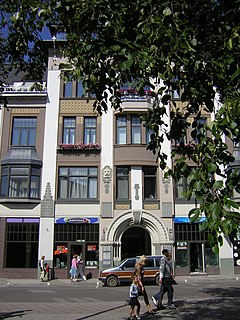 W
WAinaži is a harbour town in the Vidzeme region of Latvia. The town is located near the Estonian border on the site of an ancient Livonian fishing village. Before 1917, it was known by its German name Haynasch.
 W
WJūrmala is a city in Latvia, about 25 kilometres west of Riga. Jūrmala is a resort town stretching 32 km and sandwiched between the Gulf of Riga and the Lielupe River. It has a 33 km stretch of white-sand beach, and a population of 49,325 in 2019, making it the fifth-largest city in Latvia.
 W
WKolka is a village in Kolka parish, Dundaga municipality, on the tip of Cape Kolka in Courland in Latvia, on the coast of the Gulf of Riga in ancient Livonia.
 W
WLiepāja is a city in western Latvia, located on the Baltic Sea. It is the largest city in the Kurzeme Region and the third largest city in the country after Riga and Daugavpils. It is an important ice-free port. In 2019 the population of Liepāja was 68,945 people.
 W
WPāvilosta is a small port town in Latvia located at the mouth of Saka river in Courland.
 W
WRiga is the capital of Latvia and is home to 627,487 inhabitants (2020), which is a third of Latvia's population. Being significantly larger than other cities of Latvia, Riga is the country's primate city. It is also the largest city in the three Baltic states and is home to one tenth of the three Baltic states' combined population. The city lies on the Gulf of Riga at the mouth of the Daugava river where it meets the Baltic Sea. Riga's territory covers 307.17 km2 (118.60 sq mi) and lies 1–10 m above sea level, on a flat and sandy plain.
 W
WSalacgrīva (pronunciation is a town in the northern part of Vidzeme's region, Latvia. The centre of the area surrounding Salacgriva is the mouth of Salaca River, and the town's name literally means "Mouth of Salaca" in Latvian. It is famous for hosting Positivus Festival every July since 2007 for 3 days attracting thousands of tourists.
 W
WSaulkrasti is a town in Latvia on the east coast of the Gulf of Riga and the capital of the Saulkrasti municipality. Made up of a number of historic fishing settlements, the town stretches for some 17 km from the Inčupe river in the south to the village of Skulte in the north. The town itself spans across 4.8 square kilometres (1.9 sq mi) and includes an additional 42 square kilometres (16 sq mi) of fields and forests.
 W
WVentspils is a city in northwestern Latvia in the historical Courland region of Latvia, and is the sixth largest city in the country. At the beginning of 2019, Ventspils had a population of 34,377. It is situated on the Venta River and the Baltic Sea, and has an ice-free port. The city's name literally means "castle on the Venta", referring to the Livonian Order's castle built alongside the Venta River. Ventspils holds the national record for the highest temperature ever recorded in Latvia with 37.8 °C (100.0 °F) on 4 August 2014.